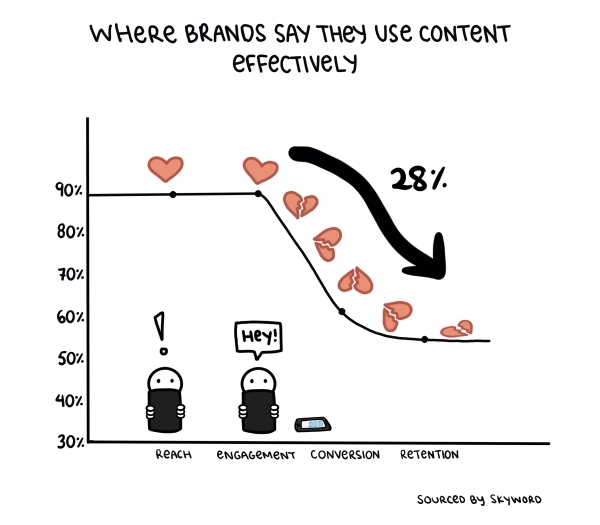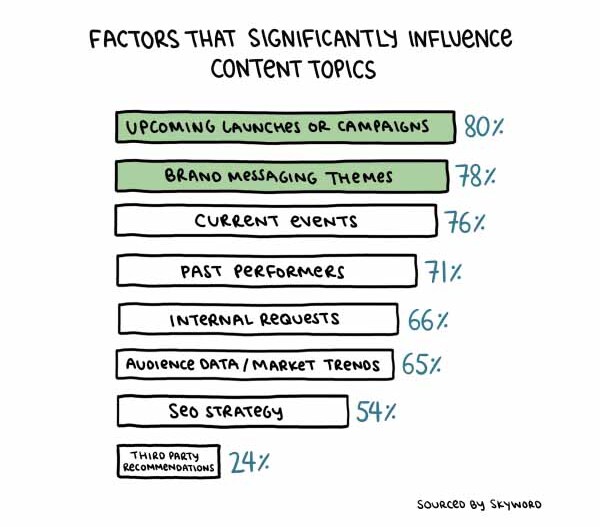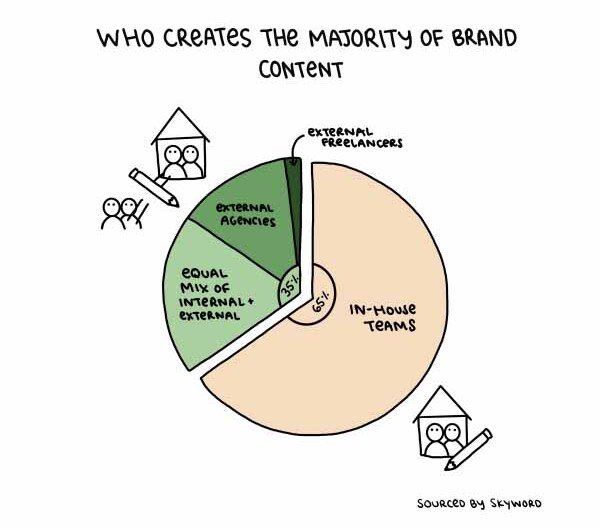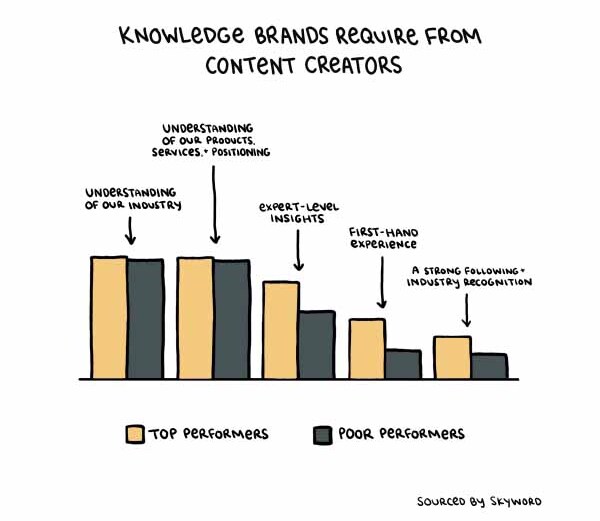Content Creation
Your Audience Puts a Premium on Trust…Do You?
By Andrew Wheeler on September 14, 2020
Subscribe to our monthly newsletter, Content & Context, to receive future insights and updates on the content marketing world from Skyword CEO, Andrew C. Wheeler.
Within three weeks of becoming Skyword's CEO, I became a first-time parent.
While I wouldn't necessarily recommend tackling these two life events simultaneously, the combination—and plentiful middle-of-the-night thinking hours—have brought an uncanny dose of perspective and clarity.
COVID-19 brought another dose of perspective. Global repercussions aside, for us brand executives, the status quo imploded. Events, eCommerce, social, content, advertising...every element of our engagement flywheel demanded evolution.
And evolve we have. According to McKinsey, consumer and business digital adoption leapt about five years forward in just the first eight weeks of the pandemic hitting the U.S.
Ecommerce penetration jumped from 16 percent in 2019 to 33 percent by April, 2020. And consumers turned toward us. According to Edelman, who conducted a special brand trust survey during the pandemic, consumers turned to brands more than the government to help solve the challenges at hand. Around 85 percent of consumers wanted us, brands, to provide them with news and instruction to help them navigate the crisis.
Trust is at a premium like never before. And the onus is on us to continue helping and supporting our audiences amid vast uncertainty.
But are we prepared to take up this mantle? How do we make sure that customer-focused ingenuity remains part of our marketing DNA?
This is what I've been contemplating during late-night swaddlings with my son. I believe there are three inflection points ahead that will separate the leaders from the laggards in the new trust economy:
#1: Building relationships vs. awareness
#2: Marketing outside in vs. inside out
#3: Leading with expertise vs. features
Here's why I believe each matters.
1. Building Relationships vs. Awareness
As brands, we have a follow-through problem, and it's hurting our relationships. In June, we surveyed 200+ content marketing leaders and found that we're practicing the marketing equivalent of Tinder. We're getting lots of matches, but securing few dates and even fewer relationships. There's a 28 percent plummet in the effective use of content from the engagement to the conversion stage of the customer journey.

This lack of relationship-building is putting our businesses at risk. With COVID-19 inhibiting new growth for most of us, we can't afford to ghost our customers during the courtship phase. Retention is paramount, so we have to put the work in to hold onto the relationships we have.
The key question to ask is: How can we democratize our content usage across the full customer journey?
It's at the later stages of the journey where I've seen content really work its magic. Airbnb uses community stories to convince people with proof of how home listing has changed their customers' lives. Hubspot has productized how-to content with HubSpot Academy, a tool that increases product usage and demonstrates to its customers that the brand is invested in their success.
Winning brands will use content to support their sales and retention strategies directly, by making it a part of the value they deliver all the way through the customer journey. At the same time, they'll revise legacy incentive models to keep their teams focused and more accountable for sales and retention metrics.
2. Marketing Outside In vs. Inside Out
We don't just have to get over our swiping addiction, we need to work on our conversation skills. Our research shows that content topics are heavily influenced by brand campaigns and messaging themes, rather than bona fide audience priorities and market data.

Creating content this way sets our brands up for failure. It's like going to a party and talking only about yourself, then wondering why no one wants to hang out with you.
When we market from the inside out, we lose touch with our customers as multi-dimensional people. This assumes stasis, blocking out the reality that our customers' needs shift constantly.
Thankfully we have the tools to find out what they're looking for. SEO, social listening and voice of the customer data is the fuel brands need to create content that's more relevant and demonstrates empathy: proof that we share our customers' cultural reality.
Case in point: when COVID-19 became a global pandemic, we saw brands going for big empathy moments with splashy "we're in this together" ads, but sustaining trust requires empathy at scale.
The key question to ask is: How do we make sure every moment with our brand is an empathy moment?
A Fortune 500 financial services company we work with took the right approach. We created a COVID-19 Impact Analysis for them, and they used it to re-evaluate where their content did—and did not—align with their audience. They quickly pivoted to produce content that provided support and guidance on the issues that mattered most: financially protecting their families, facing unemployment insecurity, and the pandemic's impact on retirement.
The brands who make content that puts their audience first will continue to win out over those who prioritize product features.
3: Leading with Expertise vs. Features
Finally, we have a credibility problem—or, as leaders see it, a big opportunity. Remember, consumers are turning to us, brands, more than government. And they turn to us for advice and instruction, not just the products we sell. So why are so many of us leading with features instead of expertise?
The answer lies in our org structure. Over two-thirds of us rely on in-house teams for content creation.

But building an in-house pool of topic experts is hard. It basically hinges on the ability to hire unicorns who are marketers and can speak with complete authority (or scientific accuracy, or first-hand experience) about the topics our audience cares about.
Unsurprisingly, our research shows that, overall, marketers are far less likely to demand expert insights and first-hand experience from their content creators than they are understanding of their industry, products, and brand positioning. Top performers are more likely to have more insider knowledge requirements.

The key question to ask is: Why should our audience trust our brand to give this kind of advice?
Brands like Hill's Pet Nutrition have become an expert resource for their target audience (pet parents) by enlisting actual pet owners and accredited veterinarians as content creators for their blog. Their monthly pageviews are in the millions and they rank #1 for over 1,700 keywords because they cover not only pet nutrition, but the broad range of questions that their audience has about pet care.
The brands who thrive will embrace expertise marketing, positioning themselves as the go-to resource for their customers using the voices of actual experts to drive that home. And they will be experts not only on their own products, but on the range of concerns that surround those product areas for their customers.
These are all exciting opportunities for us to lead change and make customer-focused content a game-changing asset for our brands.
Take a look at our 2020 Content Marketing Trends report for this and a lot more data on how content marketing is shifting. We even added a special section (Secrets to Success) that zooms in on how top performers are gaining an edge.
Featured image by Tim Mossholder on Unsplash

